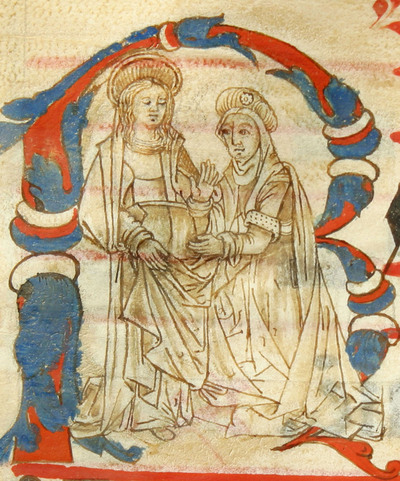
Initial from a Gregorian gradual. ca. 1400s. More images here
An illuminated manuscript is defined as a handwritten (manuscript) item illustrated with images, decorated margins, or embellished initials. Traditionally, the term is reserved for items decorated with either gold or silver, though modern terminology rarely makes this distinction. Illuminated manuscripts can be found in most areas of the world with a long written tradition including Europe, the Middle East, Asia, and Mesoamerica. It should be noted, however, that decorated manuscripts from the Asian and Mesoamerican traditions are referred to as "painted" rather than illuminated, though their defining characteristics are often very similar to the illuminated manuscripts produced in Europe and the Middle East.
The first illuminated manuscripts date from the 4th century BCE Roman Empire. Early illuminated manuscripts, however, were very expensive to create and the demand for them was low. It was not until the late 1100s CE that Western Europe experienced a revitalization of the illuminated manuscript tradition. Many of the early designs were introduced to European craftsmen by their counterparts in the Middle East through trade in the Iberian Peninsula. This influence can be clearly seen through the appearance of Islamic patterns in European manuscripts dating from the Middle Ages.1
Traditional illumination was a costly and tedious process requiring the use of gold and silverleaf or powder and expensive paints. Before the appearance of paper in Europe, virtually all illuminated texts were produced on vellum, a highly durable and costly cousin to common parchment. As a result, nearly all illuminated manuscripts were of a religious nature. Non-religious or profane texts were typically not considered worthy of the expense, though an increasing number of secular texts were illuminated beginning in the late 1200s. The production of illuminated manuscripts increased steadily until the mid-1400s when the moveable type printing press appeared, resulting in the decline of manuscript production. Some illumination of printed works did occur, but the more efficient process of block printing quickly replaced this tradition.
Notes
- Backhouse, Janet. The Illuminated Manuscript (Oxford, England: Phaidon, 1979). Return to text ↑
